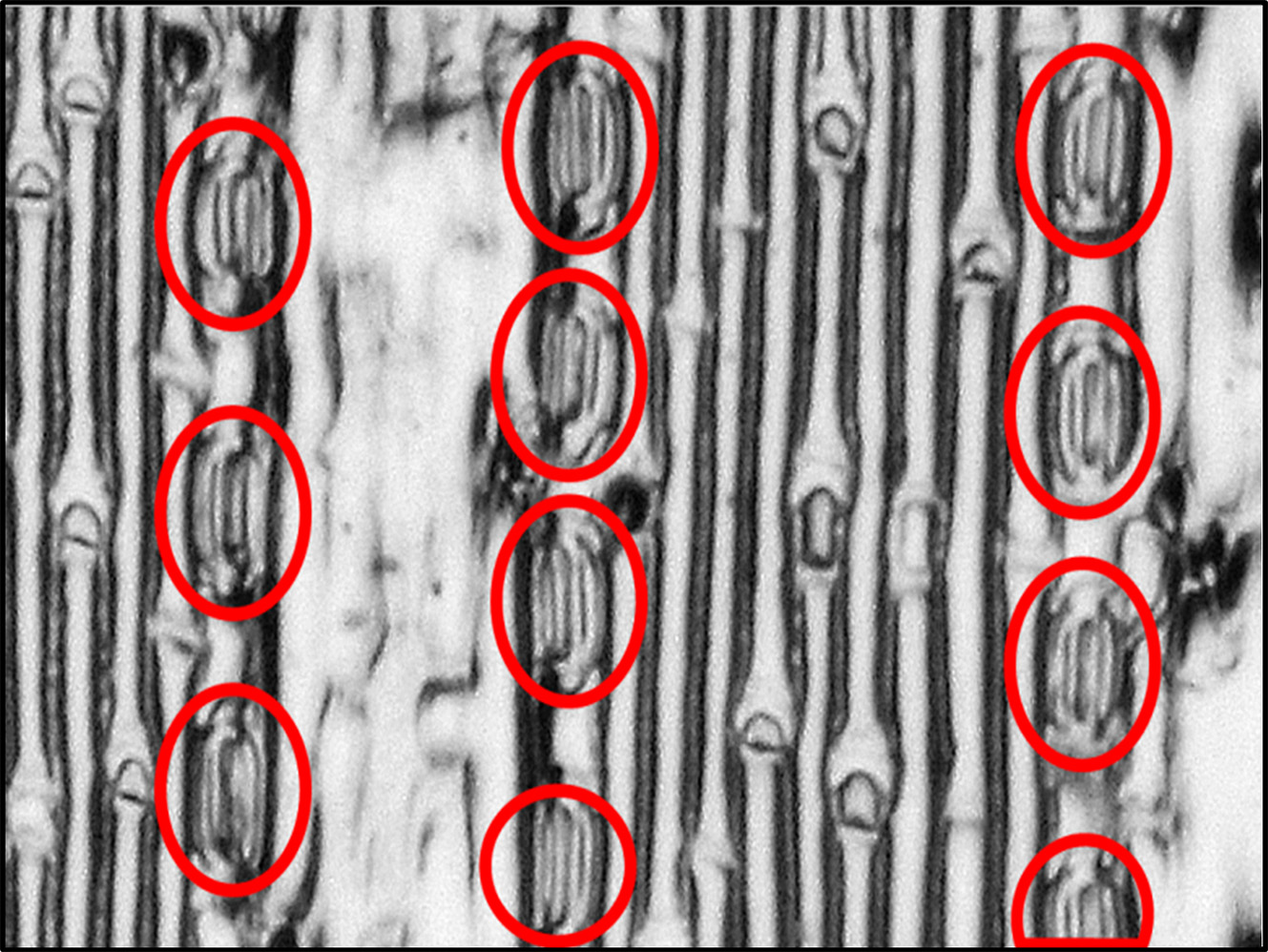Characterization of epidermal patterning in grasses
Contact person: Steven Yates
Partners: Andreas Bruun, Christoph Greider and Bruno Studer
Project description: Yield stability and yield increase are threatened by drought and heat stress, both of which are predicted to increase in frequency and severity due to the climate change. Water use efficiency (WUE) and canopy temperature have thus become important breeding traits. The stomata play a key role in the plant-environment interaction because they regulate gas exchange and stand in close relationship with several important physiological parameters connected to WUE and canopy temperature. Stomatal related traits such as stomatal density and stomatal conductance therefore have become important breeding traits.
We have developed a novel method to describe stomatal distribution in grasses. In this work we have taken advantage of a field experiment in wheat: ongoing at the Eschikon station. We applied our method to describe stomatal density traits in ~ 400 wheat genotypes from the GABI-wheat population; which was specifically designed for association studies. The high quality phenotype data was coupled with high density genotype data for association mapping. These data showed strong QTLs underpinning stomatal traits.
We are currently analysing a second replicate experiment, again using the GABI wheat panel under field conditions. In the second year we have also collected physiology data to supplement our work. These data will also be used to complement ongoing work in the FIP project, in the group of Prof Achim Walter. Finally we are also looking to transfer this technology to forage crops both directly and indirectly (use of QTL data).

